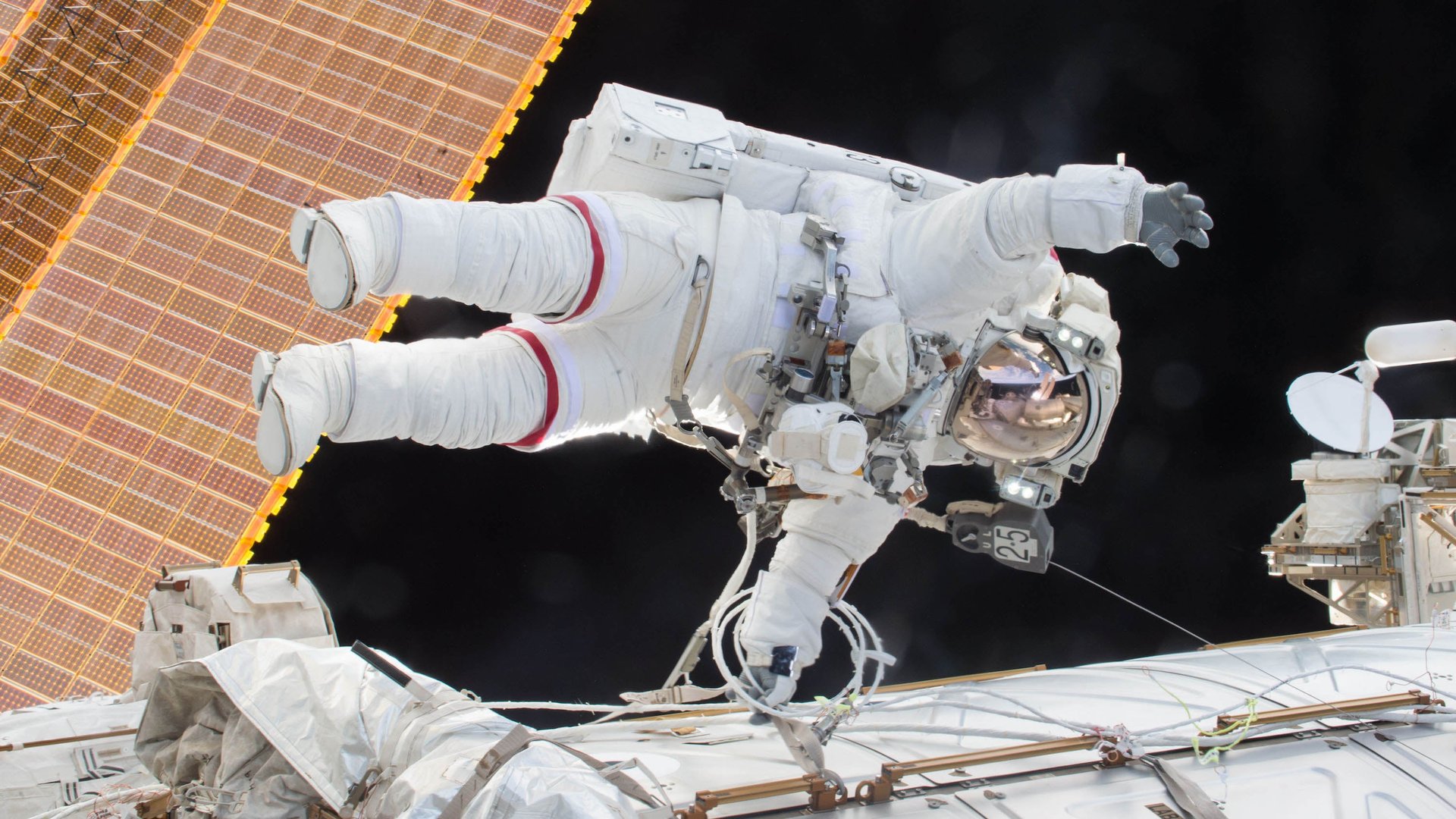Astronaut Scott Kelly and his twin could get us the medical breakthrough we need for Mars
Today is the day space nerds have been waiting for: NASA astronaut Scott Kelly is set to return to Earth after spending nearly a year in outer space.


Today is the day space nerds have been waiting for: NASA astronaut Scott Kelly is set to return to Earth after spending nearly a year in outer space.
Kelly spent 340 days aboard the International Space Station along with Russian cosmonaut Mikhail Kornienko. Kelly’s identical twin brother, Mark, stayed here on Earth. NASA has been studying the Kelly twins to learn more about how living in space changes the human body while factoring out the effects of different genetics.
The insights that scientists glean from comparing the twins could be an important step toward helping NASA achieve its goal of sending people to Mars. As we count down to Kelly’s arrival, scheduled for 11:27 pm ET on March 1, here’s a quick look at what we already know about the strange effects that life in space has on the human body.
In the absence of gravity, the fluid in your body redistributes upwards, making your face puffy and giving you skinny “chicken legs.” Some of that fluid also moves into your blood stream, increasing its volume, so your heart and blood vessels need to adapt. Initially, your heart has to pump more while your blood vessels relax.
Space can also affect your vision. When fluids shift into the eye, the pressure inside increases. If the pressure gets too high, it can impair vision or eventually cause blindness. Sixty percent of astronauts on long missions experience some loss of near and distant vision, according to a recent study.
Scientists have also found that, in the absence of gravity, your bones and muscles get weaker. Your body is used to working against its own weight, but that load is lightened in space. So astronauts and cosmonauts on the International Space Station try to keep up their strength by exercising over two hours a day almost daily on specialized gym equipment like an Advanced Resistive Exercise Device, an Interim Resistive Exercise Device or a Hybrid Training System, the last of which uses electrical stimuli to provide resistance in place of gravity.
Weight-bearing exercises help strengthen bones. That’s important because, in the absence of gravity, your bones get thinner—which can affect your kidneys, too. Bones are made of calcium and other minerals. When the bone thins, the calcium goes into your blood stream and gets filtered by the kidneys, where it can form stones. And even with exercise, astronauts’ aerobic capacity drops by almost 20%. This means that astronaut Mark Watney, played by Matt Damon in The Martian, probably would have been a lot less active on Mars in real life.
It’s not just weightlessness that can affect a crew member’s health. The Earth’s atmosphere, including the ozone layer, shields us from most of the sun’s radiation. But astronauts don’t have that protection, and are exposed to galactic and solar cosmic rays.
NASA tries to shield astronauts from radiation as best it can through the materials used to build the International Space Station and the orientation and positioning of the spacecraft. The space agency also tries to minimize the time astronauts spend outside the spacecraft. And instruments on board allow astronauts to monitor their exposures to radiation. But the longer the flight, the larger their overall exposure will be—which could increase the risk of contracting some cancers.
We’re also just starting to understand how a lack of gravity changes the expression of our genes. Gravity seems to function as a switch, turning our genes on or off under certain conditions. Studies have shown that in the absence of gravity, some genes controlling the immune system don’t get turned on normally. This means the body has a harder time fighting off infections. Combined with the need to share tight quarters and a limited air supply, you can see how an infection aboard a spaceship or space station could spread quickly and potentially be disastrous–especially where there’s limited access to medical care.
Kelly’s return to Earth could teach us a lot about what we can do to counteract these effects. NASA’s plan to send humans to Mars by the 2030s will be in many ways a far more difficult challenge than sending astronauts to the moon. Most estimates suggest that a trip to Mars would take around nine months. So we need to figure out not just how to get our astronauts there—but how to make sure they survive the trip.